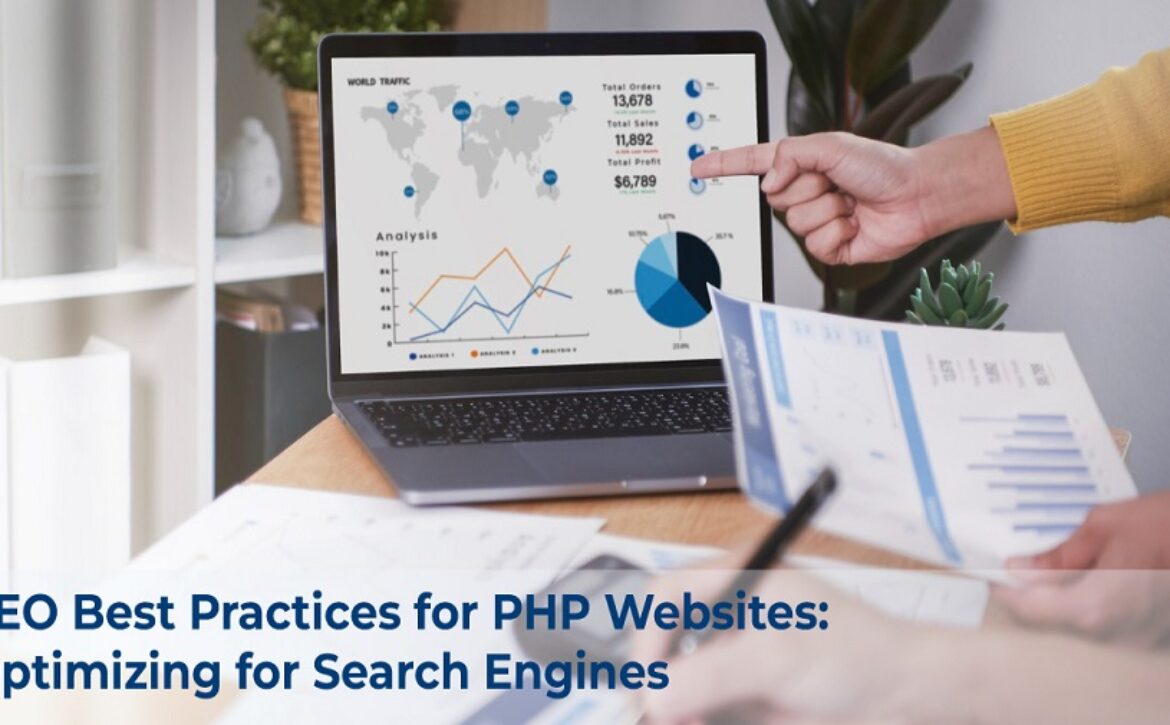SEO Best Practices for PHP Websites: Optimizing for Search Engines
Providing that people can comfortably locate your website is a must in today’s digital age. Here’s when SEO becomes useful. If PHP is used in creating your website, it must be configured so search engines such as Google can properly index and understand it. This makes it easier for more individuals to find your website when they look for products similar to what you sell. This article will discuss a few easy ways to improve search engine visibility for your PHP website. Help go over things like maintaining that the web addresses on your website are clear and understandable, optimizing the speed at which your pages load, creating descriptive page titles and descriptions, and maintaining the aesthetic appeal of your website.
What is PHP? Understanding the Basics of PHP and SEO
PHP is a programming language that makes dynamically generated content and websites with database interaction capabilities. “Hypertext Preprocessor” is what it stands for. It makes websites more capable of displaying customized content and facilitating online purchases. Hiring full-stack PHP developers can be considered the silent engine that powers websites. Thus, well-structured and clean PHP code will help your website rank higher in search results, increasing traffic.
PHP SEO-Friendly URL Structure
Easy-to-read and recall web addresses result from a well-structured URL. For example, a good URL might contain words that explain the page’s content rather than being long and unorganized with lots of random numbers and letters. PHP is useful in this situation. Search engines like Google value clean, well-organized URLs, which we can construct with PHP. It may optimize our URLs for search engines using PHP and a “.htaccess” file. Search engines will be better able to learn the content of our pages, which will increase the website’s position in search results. Hire PHP programmers to create dependable and dynamic websites customized to your demands.
Optimizing PHP Pages for Speed
Page speed is important for SEO since it decides how soon people can access your website. It may utilize some neat PHP methods to speed up our website. For instance, Caching can be used to load some pages on our website more quickly when someone arrives. Additionally, PHP code is well-written, meaning it won’t bog down or cause any issues. PHP website loads quickly and maintains user satisfaction by keeping an eye on these items and adhering to best practices, which benefits the SEO efforts. For your development tasks, hire offshore PHP developers to take advantage of affordable solutions and a global talent pool.
Dynamic Meta Tags Implementation
Search engines use meta tags, which are brief descriptions of your website’s content. These consist of the page title and a brief description, among other things. These meta tags can be modified based on the page a user sees using PHP. The term “dynamic meta tag implementation” refers to this. It’s great because it allows us to guarantee that every page of our website has the proper content to perform effectively in search engine results. For instance, PHP can automatically modify the meta tags on a page about dogs such that the title says something like “All About Dogs” and provides a brief overview of the page’s content. Hire remote PHP developers allows you to work together on projects from anywhere worldwide while maintaining flexibility, efficiency, and full access to top talent.
Handling Duplicate Content Issues
Repeating the same material throughout a website’s pages could affect how highly it ranks in search results. It refers to this as duplicate content. Duplicate content in PHP websites can occur for a number of reasons, such as having identical information on many pages or distinct URLs pointing to the same page. Hire a dedicated PHP programmer who will allow you to concentrate solely on developing your project, guaranteeing prompt delivery of high-caliber solutions that meet your needs. Canonicalization, a technique that instructs search engines which version of a page is the primary one to display in search results, can be used to remedy the issues.
Mobile Optimization for PHP Sites
It is becoming increasingly important that websites load quickly and look great on mobile and tablet devices since many people use them on the internet. Herein lies the role of mobile optimization. Making PHP websites mobile-friendly is essential if you want them to perform better in search engines like Google. The use of responsive design is one method for achieving this. This indicates that whether viewed on a large computer screen or a small phone screen, the website will automatically adapt its layout and content to accommodate the various screen sizes. Additionally, PHP frameworks include capabilities and tools to help in mobile optimization. By employing these frameworks, developers may construct websites that look fantastic and are user-friendly across all devices.
SEO-Friendly Content Management
PHP websites contain search engine-friendly content, so using effective techniques is important. One approach uses frameworks or a content management system with PHP support. These tools make it simple to manage and arrange the content of websites. Content created, edited, and published with a CMS or framework is easier to find and ranks higher in search engines like Google. To design feature-rich, personalized websites that fit your business objectives and effectively serve the demands of your target audience, find a reputable PHP website development company.
Boost Your PHP Site: Implement SEO Tactics Now
A complete plan is needed for search engine optimization of your PHP website. This involves being mindful of URLs, the speed at which your pages load, metadata, effective content management, and the material appears great on mobile devices. Implementing these suggestions may increase your website’s internet visibility and attract more interested visitors. Thus, don’t delay! Start implementing these adjustments right now in the PHP development company to meet your online objectives and increase the number of visitors to your PHP website.










